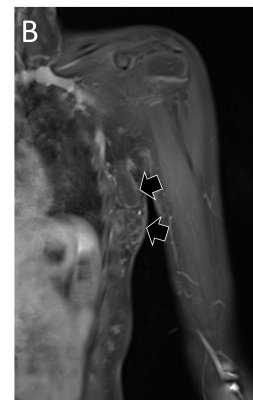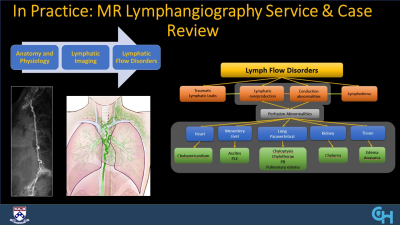Weekday Course
Vascular Anomalies & Lymphatic Disorders
Joint Annual Meeting ISMRM-ESMRMB & ISMRT 31st Annual Meeting • 07-12 May 2022 • London, UK

| Vascular Anomalies | |||
| 17:00 |  |
Classification of Vascular Anomalies & Role of MRI
Oscar Navarro
Vascular anomalies are common in children. Using the classification proposed by the International Society for the Study of Vascular Anomalies (ISSVA), they can be categorized into two large groups: vascular tumors and vascular malformations. MRI is used in a minority of cases but provides useful information for diagnosis, treatment monitoring and assessment of associated anomalies, especially overgrowth. MRI relies on the use of T1 and T2 (usually with fat suppression) sequences as well as contrast-enhanced angiography and contrast-enhanced fat-suppressed T1 sequences. Correlation with clinical information is crucial for appropriate interpretation of MRI findings.
|
|
| 17:30 | Case-Based Review of Vascular Anomalies
No Video Available
Introduction:Vascular Malformations represent a rare disease. The most common vascular anomalies include venous (VM), lymphatic (LM), arteriovenous (AVM) and combined malformations (CM).MRI in Slow-Flow and Fast-Flow Vascular Malformations:VMs are hyperintense lesions in Multiplanar Turbo Inversion Recovery Magnitude (TIRM) or T2-weighted TurboSpinEcho (T2 TSE) imaging. In late T1Vibe the full extent and patency of the VM is displayed.LMs appear as hyperintense cysts with/without septation in T2-weighted TSE sequences.AVMS are characterized by flow voids. MR-Time-resolved Angiography With Interleaved Stochastic Trajectories is mandatory for depiction of flow dynamics and shunting.Conclusion:MRI-morphology of vascular malformations decides on treatment.
|
||
| Lymphatic Disorders | |||
| 18:00 | Overview of Lymphatic Disorders
Susanna Guerrini
|
||
| 18:30 |  |
In Practice: MR Lymphography Service & Case Review
David Biko
Imaging of the central lymphatic system can be performed using non-contrast T2 weighted lymphangiography and dynamic contrast enhanced lymphangiography (DCMRL) via an intranodal, intrahepatic, or intramesenteric approach. This talk will describe lymphatic anatomy, imaging techniques, and lymphatic flow disorders such as plastic bronchitis and protein losing enteropathy.
|
|
The International Society for Magnetic Resonance in Medicine is accredited by the Accreditation Council for Continuing Medical Education to provide continuing medical education for physicians.